From navigating Mumbai’s rush hour commute to multi-camera filming across the length and breadth of India, BBC World’s new show, World’s Busiest Railway looks at this gigantic rail system that continues to stay on track since 1853
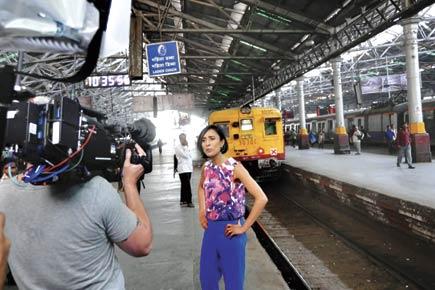

ADVERTISEMENT
Was there a trigger point to do this series on such a large scale?
A. We made a series called “Airport Live” from Heathrow in London in 2013 that explored the science and systems that help that airport to run smoothly. It was a big hit with audiences and the BBC2 quickly asked for something similar.
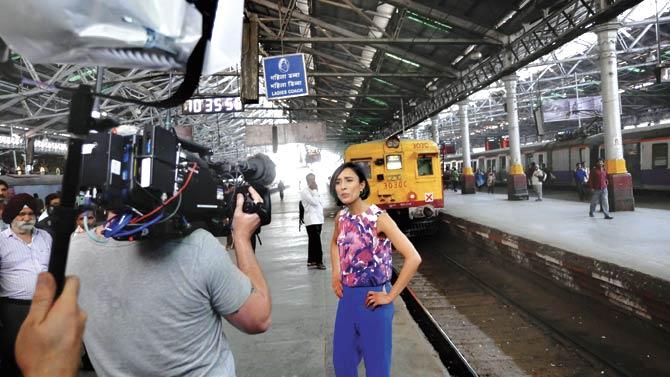
Presenter Anita Rani shooting live on location at the Chhatrapati Shivaji Terminus for the series, World’s Busiest Railway. Pics/Amit Vachharajani
We immediately started looking at railways. So many of us across the world rely on trains to get to and from work, but very few of us ever think about the technology that makes them work. Once we started looking at staggering rail operations, Mumbai, and specifically CST, was the obvious choice.
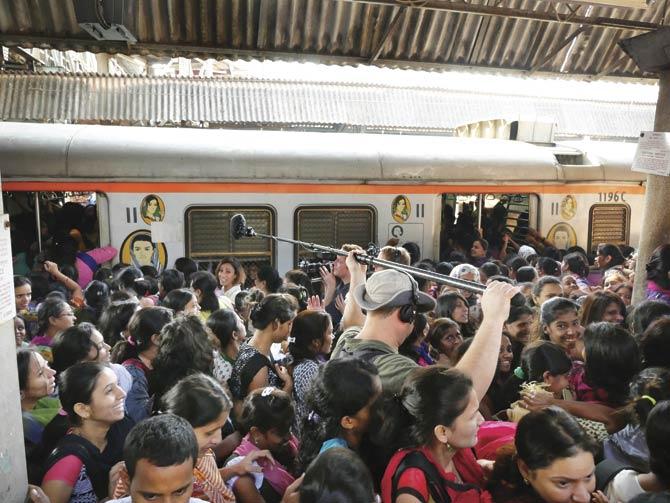
Shooting with presenter Anita Rani at a crowded railway station in Mumbai
How did you research for the project?
A. A small team of us came out to Mumbai on an initial visit in September 2014 and spent a few days asking a lot of questions. We visited the repair depots, the control room and all the hidden areas of the station and chatted to the people who worked there.
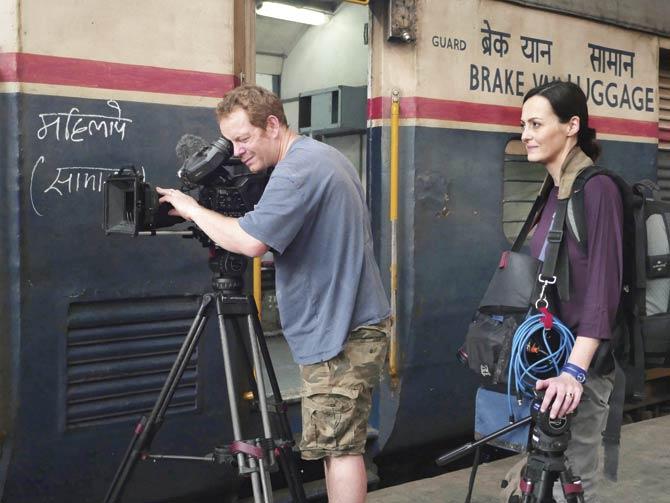
Series producer Amanda Lyon
We were also helped by senior journalist Rajendra Aklekar and the IRFCA (Indian Railways Fan Club Association) who know more about the railways and CST than anyone else in the world. Everyone we met was thrilled, and sometimes astonished, to be asked about their work.
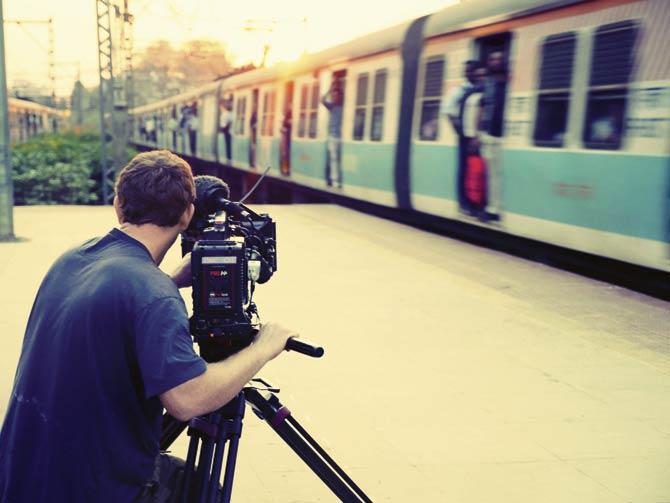
We realised that in Mumbai, just like the rest of the world’s railways, there are thousands of people who do essential, behind the scenes jobs. They hardly ever get noticed or celebrated and we wanted to introduce audiences to these people – after all, they help us all get to work every day.
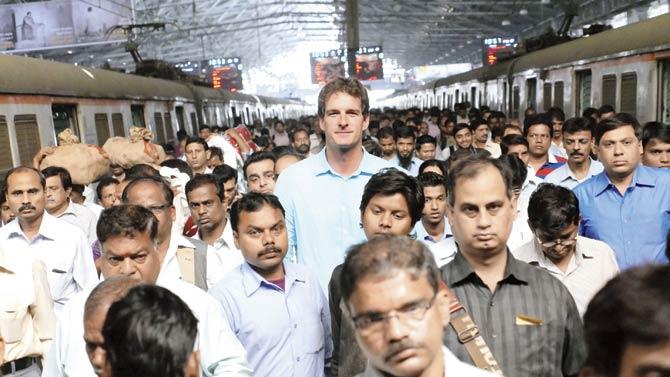
Six-foot-plus presenter Dan Snow towers over commuters at CST
As you’d expect, the PR team at the station were essential to the whole enterprise. They made us immediately welcome and helped to plan and organise all our filming. They sourced workers on the station to feature in the films and made sure that we could film everywhere we needed to.
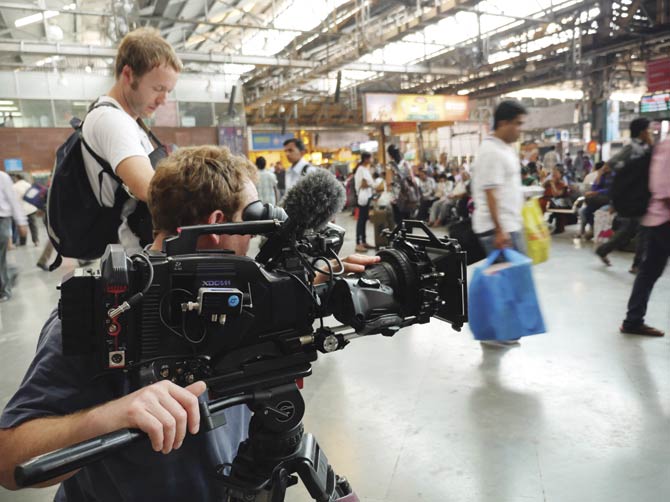
We also worked closely with our BBC Mumbai bureau and Amit Vachharajani and his team at Backpack Films to plan and organise each shoot.
Dealing with the crowds must have been tough while shooting? How did you tackle this challenge? What were some of the other challenges, logistics wise?
A. We always thought that filming in such a busy place would be the most difficult factor we had to cope with. But we quickly found that when somewhere is as busy as CST with 600,000 passengers heading through each day, a few extra people wielding cameras don’t make much difference.
We found that most Mumbaikars were keen to get to work and largely ignored us, except when presenter Dan Snow was involved. He’s 6 foot 5 inches tall and is pretty easy to spot in a crowd. Quite often, when he was filming trying to explain that it’s a very busy place, there actually seemed to be no one round him, because everyone was giving him lots of space.
When we filmed with multiple cameras we tried to schedule so that we weren’t in one place on the station for too long. We didn’t want to block the routes off the platforms or cause obstructions and moving around was crucial to keeping everything running smoothly.
One of our biggest challenges in terms of logistics was our multi-camera filming where we brought all three presenters to the station at once. Over five days in March, we filmed about half of the series. We decided to use wireless equipment so that we weren’t trailing camera equipment all over the place, which would have been a major hazard to passengers.
Camera and sound feeds were all transmitted over radio frequencies radiated from the car park by platform 18, right over the enormous station complex. The only problem was that the frequencies we’d planned to use were completely blocked by the new Wi-Fi system the station had put in place just a few weeks before our arrival. Our technical team was able to re-programme our systems, but they had a couple of sleepless nights trying to make it all work.
What was going through your mind as you called it a wrap for the series?
A. Relief. We recorded the final links from the balcony of the BMC building, which gave us a beautiful view of the front of CST. It was a gorgeous sunny afternoon and Mumbai couldn’t have looked more attractive. It was one of those moments where I felt very fortunate to do the job I do.
How much of learning and un-learning happened in the shoot?
A. Like any series, it was a constant learning process. What was astonishing was how smoothly it all went. At the end of our fact-finding trip we had sketched out the ideas for everything we wanted to film for the 4 episodes, and to a very large extent, that’s what ended up in the programmes.
The station team is very familiar with filming, and so were our Indian fixing team, with the result that everyone was prepared and realistic about what we wanted to achieve. What keeps this railway system running over the 120 years since it was built, despite the unspeakable pressures on its infrastructure on a daily basis?
From what I saw, what keeps the railway system running is the determination and skills of a large group of railway workers. What was obvious from everyone we met and filmed with was the passion and pride that people take in the railways in Mumbai. Of course, there are frustrations and difficulties, but that’s the same the world over.
We all complain if there are delays or problems. But we all know that we couldn’t do without our rail systems either. More of us want to travel further and faster every year, on systems that are now pretty old. The infrastructure and control systems used at CST are very similar to the ones used across the world, and subject to the same pressures and difficulties.
World’s Busiest Railway premieres today, 2.40 pm (IST) on BBC World
 Subscribe today by clicking the link and stay updated with the latest news!" Click here!
Subscribe today by clicking the link and stay updated with the latest news!" Click here!







